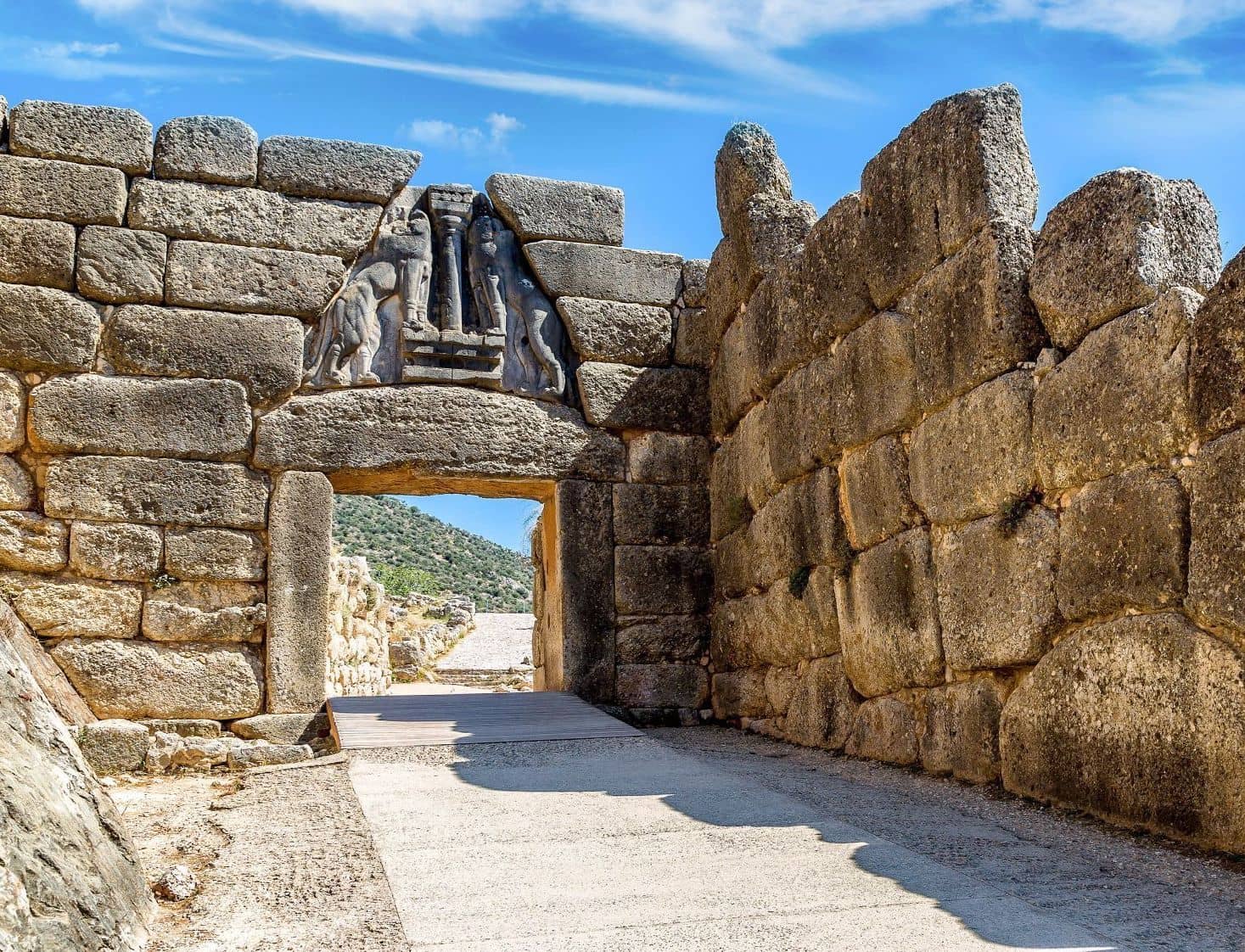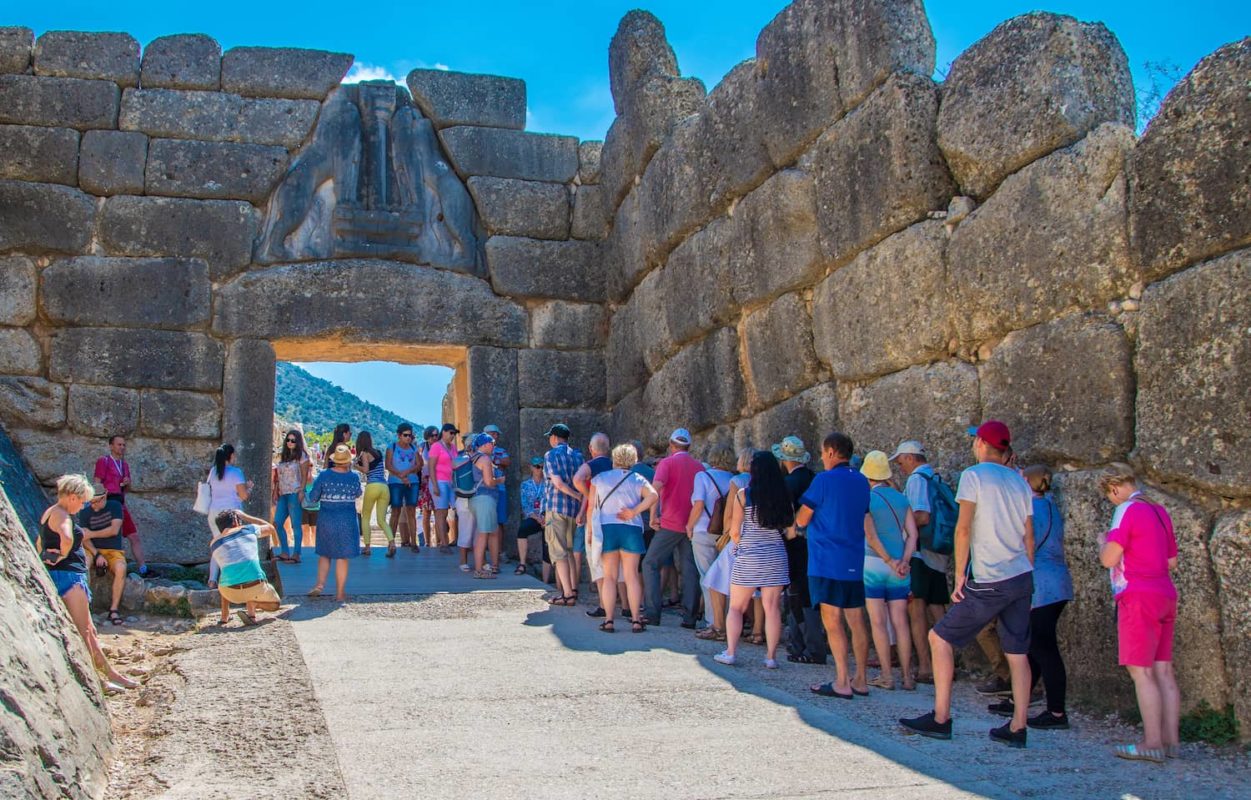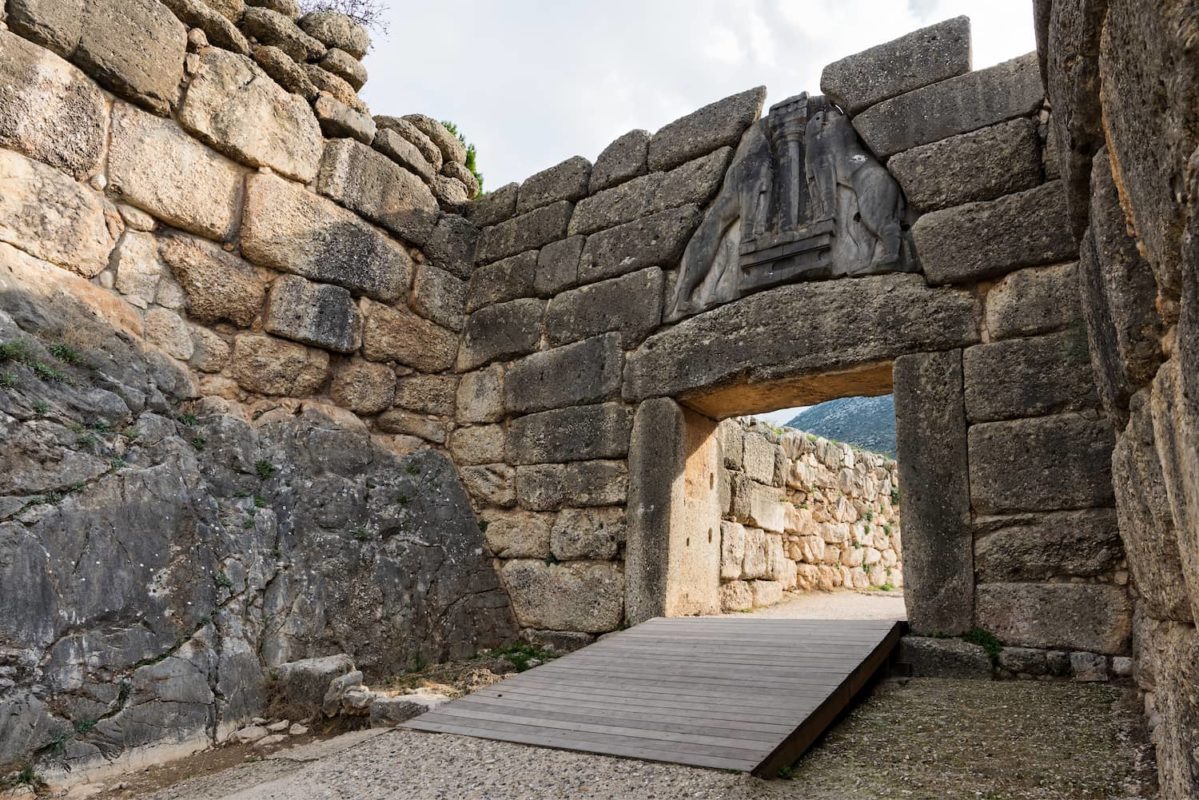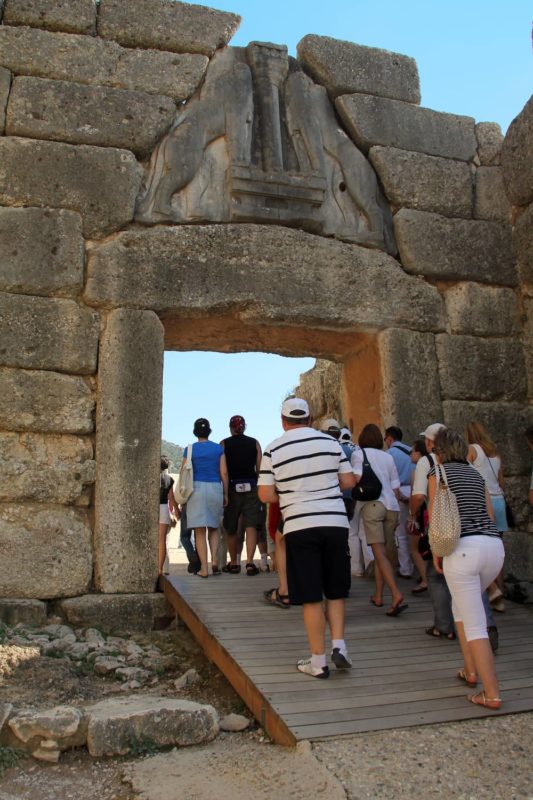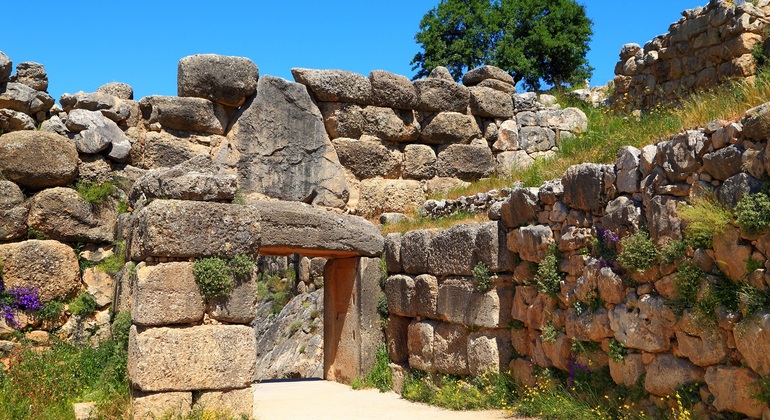Lions Gate
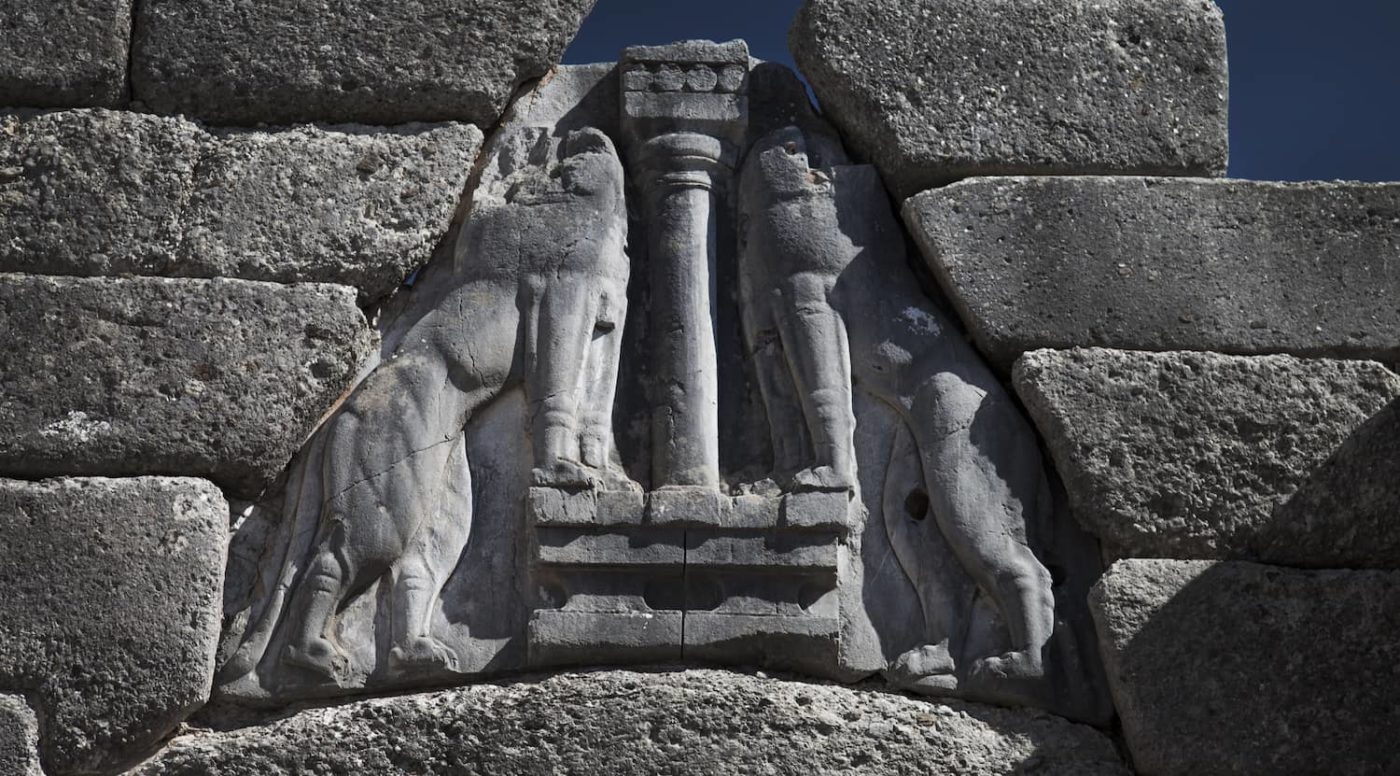
The Lion’s Gate was the main entrance of the Bronze Age citadel of Mycenae. Archaeologists and classists believe that the monument was erected sometime in the 13th century BCE. The iconic name ‘Lions Gate’ derives from the two-lion’s sculptured in a heraldic pose that stands above the entrance. The gate is about 10 feet wide and high and it is believed that the two lions had heads of metal. The lions are sculptured in a way of perpetuating and symbolising power as they are depicted with their feet on an altar and they flank the sides of a pillar.
The original structure was excavated and rehabilitated by Greek archaeologist Kyriakos Pittakis, the first to excavate Mycenae in 1841. The gate represents a combination of Cyclopean construction and ashlar masonry.
Cyclopean construction is a form of megalithic architecture, or building with very large stones. Ashlar masonry is simply an organized way of laying out square/rectangular cut stones in a regular manner. Above the lintel is an area called the relieving triangle because it is typically filled with a lighter stone or some other material to take pressure off of the lintel. It is in this area that the actual carving of the lions sits even though it still weighs nearly two tons.
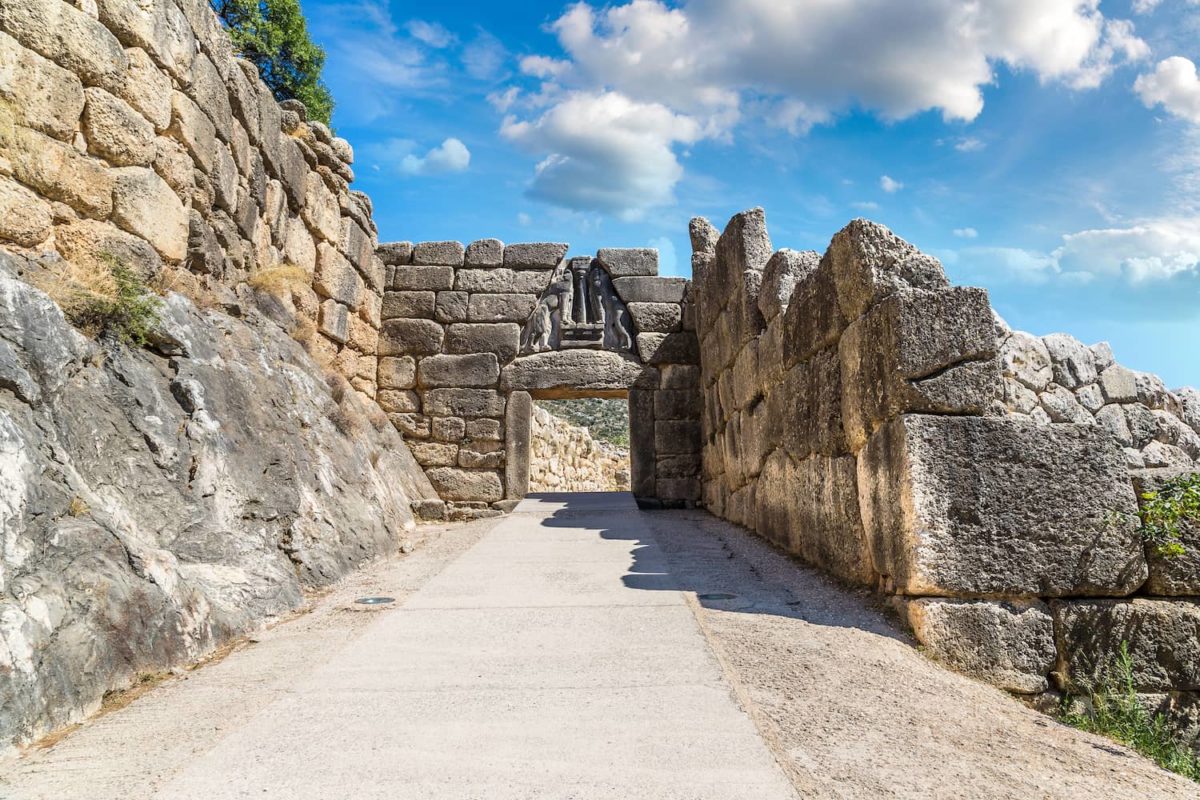
The surrounding area by which the Lion’s Gate stands, is predominantly moulded out of large megalithic stone as mentioned earlier. In Ancient Greece, it was widely accepted, especially after Homer’s publication of his ‘Odyssey’ in the 7th century, that only the Cyclops were strong enough to place the stones into place.
In classical Greek mythology, the city was founded by Perseus (son of Zeus), who gave the site its name either after his sword scabbard fell to the ground and was regarded as a good omen or as he found a water spring near a mushroom. Perseus was the first king of the Perseid dynasty which ended with Eurytheus.

